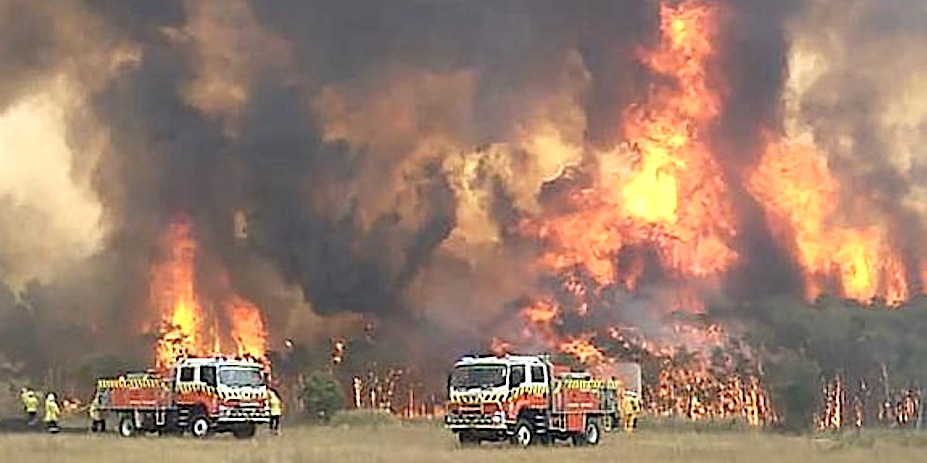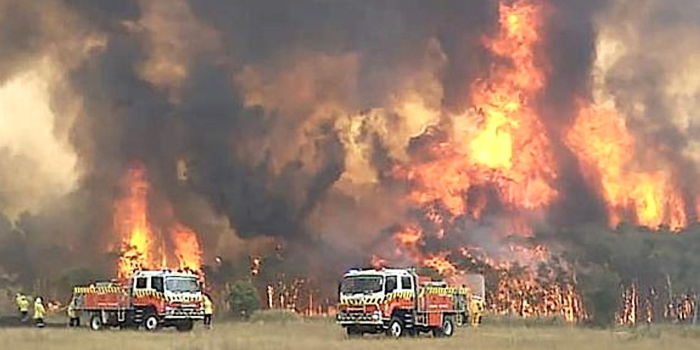A continent is on fire.
STOP promoting fly ash-based cements !
by Prof. Dr. Joseph Davidovits,
Geopolymer Institute, Saint-Quentin (France)

A continent is on fire. Both Australia and California have never experienced such an inferno. More and more citizens are blaming the climate change (that is CO2 emissions) responsible for this. But the governments of Australia, along with the U.S., Russia, Brazil, China, India, Poland, South Africa and also Germany – where coal mining and coal-power plants are significant industries and with powerful lobbies – are entrenched and want to stick to their coal policy and business.
Fly ash-based cement is supporting the burning of coal:
The demand for coal in electricity power plants is steadily increasing in the world and consequently generates more and more fly ash. Power plants are lobbying the cement and building industry with so-called low-CO2 fly ash-based cements. The fact that fly ash is used to make building materials is an excuse to increase coal production. Therefore, any development and implementation of fly ash-based cement is supporting the burning of coal in the production of electricity and increasing CO2 emission.
But, do you know that the manufacture of 1 metric tonne of fly ash is generating 33 metric tonnes of CO2 emission? This fact has been overlooked by all experts, including United Nations Environment experts and myself. Indeed, the burning of 10 t Carbon (C=12 g/mol.) produces 36.66 t of CO2 (CO2 = 44 g/mol.). But the burning of coal generates 10% by weight of fly ash. In other words, 10 t coal are producing 1 t fly ash and emit 33 t CO2.
All taken-for-granted ideas and promotional slogans about low-CO2 cements based on fly ash are totally wrong:
Consequently, 1 t of fly ash-based geopolymer cement containing 50% by weight of fly ash, should be associated with 16.5 t of CO2 emission. Accordingly, 1 t of blended-OPC containing 50% by weight of fly ash, should also be linked to an additional 16.5 t of CO2 emission. These numbers seem extravagant but they do represent scientific reality, particularly if we compare them with those numbers published in the past for geopolymer cement: 0.2 t CO2/1 t GP-cement, as well as for Portland cement: 0.9 t CO2/1 tonne OPC. All taken-for-granted ideas and promotional slogans about low-CO2 cements based on fly ash are totally wrong.
Experts are stating that this CO2 does not count because it has already been spent in the production of electricity. But we understand that this production has no future because it is harmful to the global climate. Therefore, the production of fly ash-based cement is not a long-term solution. Admittedly, the material is available and sometimes stored in large quantities. But I think it is not suitable for mass production, only for local niche markets or technical specialties.
Therefore, we should stop promoting coal-fly ash-based geopolymer cements. The solution is to develop and implement geopolymeric systems relying solely on geological resources, such as Ferro-sialate geopolymer cement and the like.
The geological raw material is available worldwide and long-term stability has been demonstrated. There is no reason why scientists around the world should not be working on it. See our recent article on Ferro-sialate Geopolymers in the Geopolymer Institute Library at Technical Paper Nr27 Ferro-sialate. A special session will be dedicated to this topic at the next Geopolymer Camp 2020, July 6-8.
Joseph Davidovits, 12/01/2020.


